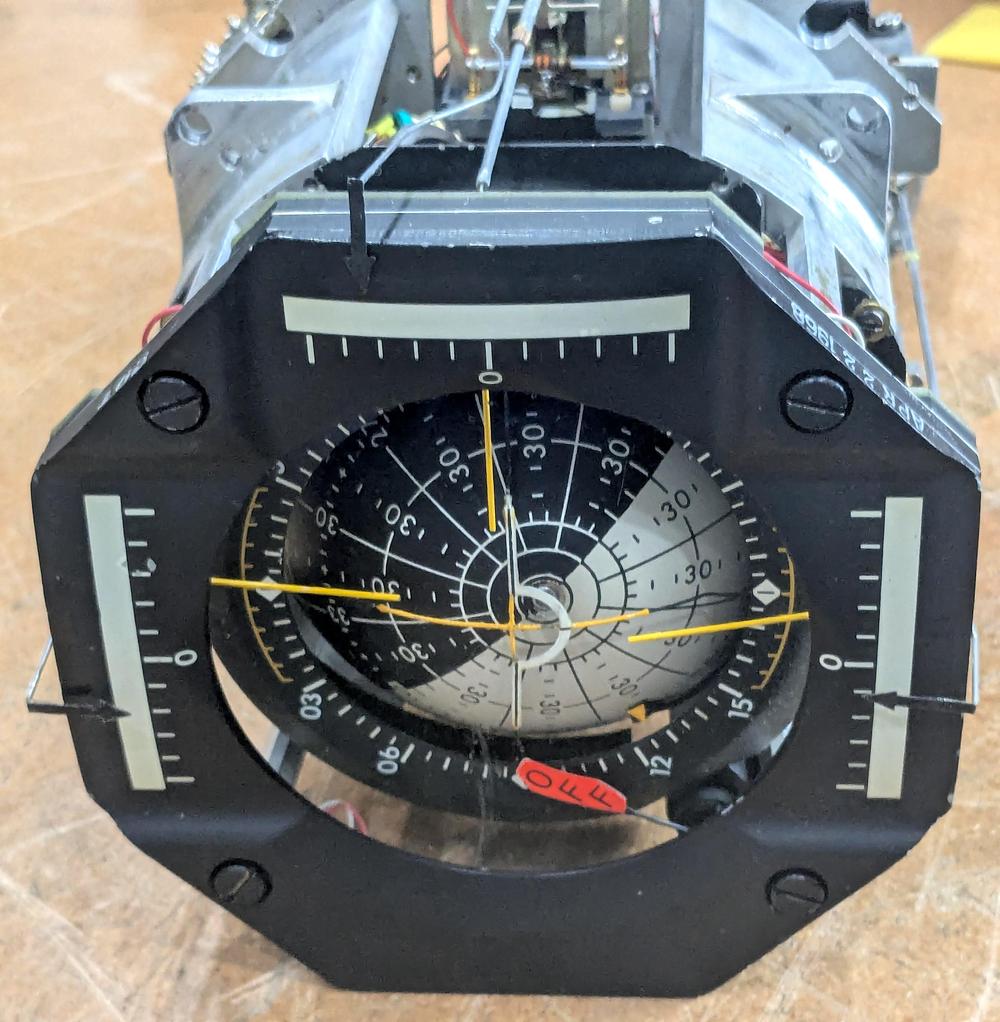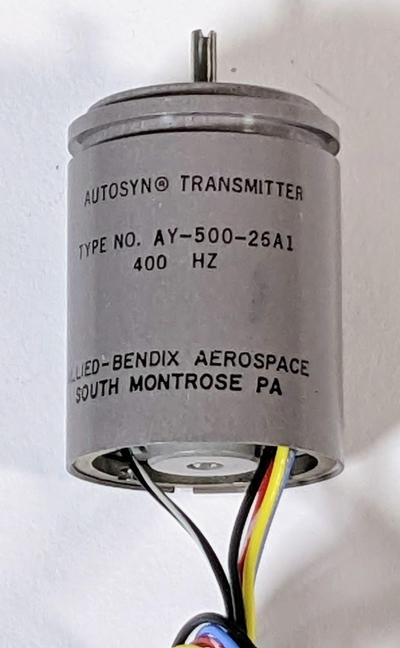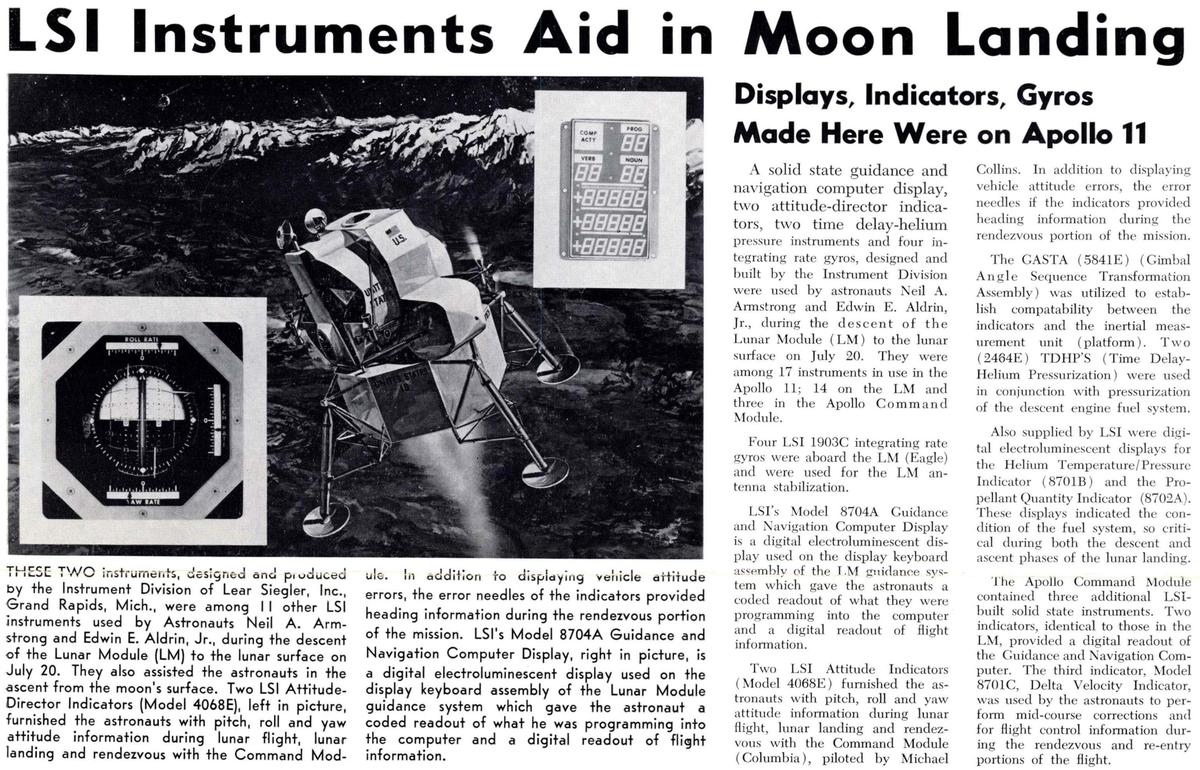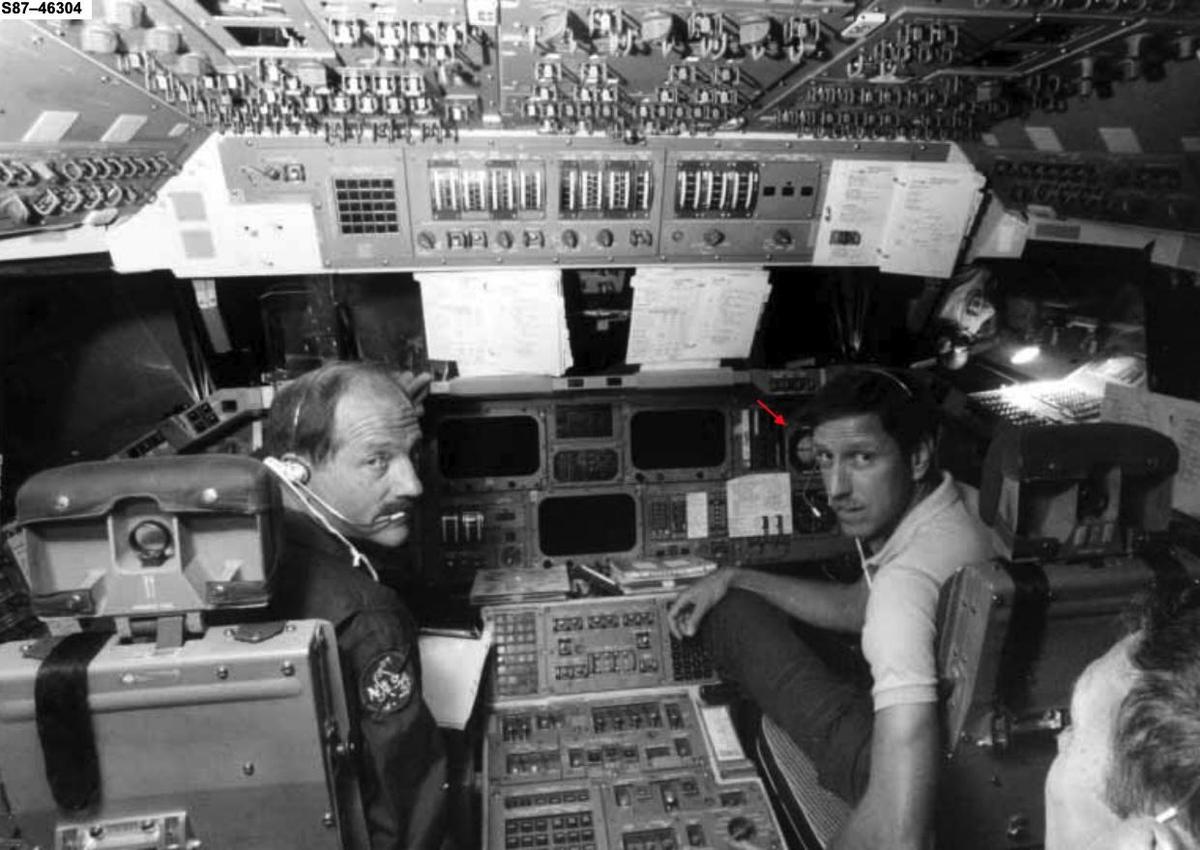In a previous life, I worked for a location-based entertainment company, part
of a huge team of people developing a location for Las Vegas, Nevada. It was
COVID, a rough time for location-based anything, and things were delayed more
than usual. Coworkers paid a lot of attention to another upcoming Las Vegas
attraction, one with a vastly larger budget but still struggling to make
schedule: the MSG (Madison Square Garden) Sphere.
I will set aside jokes about it being a square sphere, but they were perhaps
one of the reasons that it underwent a pre-launch rebranding to merely the
Sphere. If you are not familiar, the Sphere is a theater and venue in Las
Vegas. While it's know mostly for the video display on the outside, that's
just marketing for the inside: a digital dome theater, with seating at a
roughly 45 degree stadium layout facing a near hemisphere of video displays.
It is a "near" hemisphere because the lower section is truncated to allow a
flat floor, which serves as a stage for events but is also a practical
architectural decision to avoid completely unsalable front rows. It might seem
a little bit deceptive that an attraction called the Sphere does not quite pull
off even a hemisphere of "payload," but the same compromise has been reached by
most dome theaters. While the use of digital display technology is flashy,
especially on the exterior, the Sphere is not quite the innovation that it
presents itself as. It is just a continuation of a long tradition of dome
theaters. Only time will tell, but the financial difficulties of the Sphere
suggest that it follows the tradition faithfully: towards commercial failure.
You could make an argument that the dome theater is hundreds of years old, but
I will omit it. Things really started developing, at least in our modern
tradition of domes, with the 1923 introduction of the Zeiss planetarium
projector. Zeiss projectors and their siblings used a complex optical and
mechanical design to project accurate representations of the night sky. Many
auxiliary projectors, incorporated into the chassis and giving these projectors
famously eccentric shapes, rendered planets and other celestial bodies. Rather
than digital light modulators, the images from these projectors were formed by
purely optical means: perforated metal plates, glass plates with etched
metalized layers, and fiber optics. The large, precisely manufactured image
elements and specialized optics created breathtaking images.
While these projectors had considerable entertainment value, especially in the
mid-century when they represented some of the most sophisticated projection
technology yet developed, their greatest potential was obviously in education.
Planetarium projectors were fantastically expensive (being hand-built in
Germany with incredible component counts) [1], they were widely installed in
science museums around the world. Most of us probably remember a dogbone-shaped
Zeiss, or one of their later competitors like Spitz or Minolta, from our
youths. Unfortunately, these marvels of artistic engineering were mostly
retired as digital projection of near comparable quality became similarly
priced in the 2000s.
But we aren't talking about projectors, we're talking about theaters.
Planetarium projectors were highly specialized to rendering the night sky, and
everything about them was intrinsically spherical. For both a reasonable
viewing experience, and for the projector to produce a geometrically correct
image, the screen had to be a spherical section. Thus the planetarium itself:
in its most traditional form, rings of heavily reclined seats below a
hemispherical dome. The dome was rarely a full hemisphere, but was usually
truncated at the horizon. This was mostly a practical decision but integrated
well into the planetarium experience, given that sky viewing is usually poor
near the horizon anyway. Many planetaria painted a city skyline or forest
silhouette around the lower edge to make the transition from screen to wall
more natural. Later, theatrical lighting often replaced the silhouette,
reproducing twilight or the haze of city lights.
Unsurprisingly, the application-specific design of these theaters also limits
their potential. Despite many attempts, the collective science museum industry
has struggled to find entertainment programming for planetaria much beyond Pink
Floyd laser shows [2]. There just aren't that many things that you look up
at. Over time, planetarium shows moved in more narrative directions. Film
projection promised new flexibility---many planetaria with optical star
projectors were also equipped with film projectors, which gave show producers
exciting new options. Documentary video of space launches and animations of
physical principles became natural parts of most science museum programs, but
were a bit awkward on the traditional dome. You might project four copies of
the image just above the horizon in the four cardinal directions, for example.
It was very much a compromise.
With time, the theater adapted to the projection once again: the domes began to
tilt. By shifting the dome in one direction, and orienting the seating towards
that direction, you could create a sort of compromise point between the
traditional dome and traditional movie theater. The lower central area of the
screen was a reasonable place to show conventional film, while the full size of
the dome allowed the starfield to almost fill the audience's vision. The
experience of the tilted dome is compared to "floating in space," as opposed to
looking up at the sky.
In true Cold War fashion, it was a pair of weapons engineers (one nuclear
weapons, the other missiles) who designed the first tilted planetarium. In
1973, the planetarium of what is now called the Fleet Science Center in San
Diego, California opened to the public. Its dome was tilted 25 degrees to the
horizon, with the seating installed on a similar plane and facing in one
direction. It featured a novel type of planetarium projector developed by Spitz
and called the Space Transit Simulator. The STS was not the first, but still an
early mechanical projector to be controlled by a computer---a computer that
also had simultaneous control of other projectors and lighting in the theater,
what we now call a show control system.
Even better, the STS's innovative optical design allowed it to warp or bend the
starfield to simulate its appearance from locations other than earth. This was
the "transit" feature: with a joystick connected to the control computer, the
planetarium presenter could "fly" the theater through space in real time. The
STS was installed in a well in the center of the seating area, and its compact
chassis kept it low in the seating area, preserving the spherical geometry (with
the projector at the center of the sphere) without blocking the view of audience
members sitting behind it and facing forward.
And yet my main reason for discussing the Fleet planetarium is not the the
planetarium projector at all. It is a second projector, an "auxiliary" one,
installed in a second well behind the STS. The designers of the planetarium
intended to show film as part of their presentations, but they were not content
with a small image at the center viewpoint. The planetarium commissioned a few
of the industry's leading film projection experts to design a film projection
system that could fill the entire dome, just as the planetarium projector did.
They knew that such a large dome would require an exceptionally sharp image.
Planetarium projectors, with their large lithographed slides, offered excellent
spatial resolution. They made stars appear as point sources, the same as in the
night sky. 35mm film, spread across such a large screen, would be obviously
blurred in comparison. They would need a very large film format.

Fortuitously, almost simultaneously the Multiscreen Corporation was developing
a "sideways" 70mm format. This 15-perf format used 70mm film but fed it through
the projector sideways, making each frame much larger than typical 70mm film.
In its debut, at a temporary installation in the 1970 Expo Osaka, it was dubbed
IMAX. IMAX made an obvious basis for a high-resolution projection system, and
so the then-named IMAX Corporation was added to the planetarium project. The
Fleet's film projector ultimately consisted of an IMAX film transport with a
custom-built compact, liquid-cooled lamphouse and spherical fisheye lens
system.
The large size of the projector, the complex IMAX framing system and cooling
equipment, made it difficult to conceal in the theater's projector well.
Threading film into IMAX projectors is quite complex, with several checks the
projectionist must make during a pre-show inspection. The projectionist needed
room to handle the large film, and to route it to and from the enormous reels.
The projector's position in the middle of the seating area left no room for any
of this. We can speculate that it was, perhaps, one of the designer's missile
experience that lead to the solution: the projector was serviced in a large
projection room beneath the theater's seating. Once it was prepared for each
show, it rose on near-vertical rails until just the top emerged in the theater.
Rollers guided the film as it ran from a platter, up the shaft to the
projector, and back down to another platter. Cables and hoses hung below the
projector, following it up and down like the traveling cable of an elevator.
To advertise this system, probably the greatest advance in film projection
since the IMAX format itself, the planetarium coined the term Omnimax.
Omnimax was not an easy or economical format. Ideally, footage had to be taken
in the same format, using a 70mm camera with a spherical lens system. These
cameras were exceptionally large and heavy, and the huge film format limited
cinematographers to short takes. The practical problems with Omnimax filming
were big enough that the first Omnimax films faked it, projecting to the larger
spherical format from much smaller conventional negatives. This was the case
for "Voyage to the Outer Planets" and "Garden Isle," the premier films at
the Fleet planetarium. The history of both is somewhat obscure, the latter
especially.
"Voyage to the Outer Planets" was executive-produced by Preston Fleet, a
founder of the Fleet center (which was ultimately named for his father, a WWII
aviator). We have Fleet's sense of showmanship to thank for the invention of
Omnimax: He was an accomplished business executive, particularly in the
photography industry, and an aviation enthusiast who had his hands in more than
one museum. Most tellingly, though, he had an eccentric hobby. He was a theater
organist. I can't help but think that his passion for the theater organ, an
instrument almost defined by the combination of many gizmos under
electromechanical control, inspired "Voyage." The film, often called a
"multimedia experience," used multiple projectors throughout the planetarium to
depict a far-future journey of exploration. The Omnimax film depicted travel
through space, with slide projectors filling in artist's renderings of the many
wonders of space.
The ten-minute Omnimax film was produced by Graphic Films Corporation, a brand
that would become closely associated with Omnimax in the following decades.
Graphic was founded in the midst of the Second World War by Lester Novros, a
former Disney animator who found a niche creating training films for the
military. Novros's fascination with motion and expertise in presenting
complicated 3D scenes drew him to aerospace, and after the war he found much of
his business in the newly formed Air Force and NASA. He was also an enthusiast
of niche film formats, and Omnimax was not his first dome.
For the 1964 New York World's Fair, Novros and Graphic Films had produced "To
the Moon and Beyond," a speculative science film with thematic similarities to
"Voyage" and more than just a little mechanical similarity. It was presented in
Cinerama 360, a semi-spherical, dome-theater 70mm format presented in a special
theater called the Moon Dome. "To the Moon and Beyond" was influential in many
ways, leading to Graphic Films' involvement in "2001: A Space Odyssey" and its
enduring expertise in domes.
The Fleet planetarium would not remain the only Omnimax for long. In 1975, the
city of Spokane, Washington struggled to find a new application for the
pavilion built for Expo '74 [3]. A top contender: an Omnimax theater, in some
ways a replacement for the temporary IMAX theater that had been constructed for
the actual Expo. Alas, this project was not to be, but others came along: in
1978, the Detroit Science Center opened the second Omnimax theater ("the
machine itself looks like and is the size of a front loader," the Detroit Free
Press wrote). The Science Museum of Minnesota, in St. Paul, followed shortly
after.
Omnimax hit prime time the next year, with the 1979 announcement of an Omnimax
theater at Caesars Palace in Las Vegas, Nevada. Unlike the previous
installations, this 380-seat theater was purely commercial. It opened with the
1976 IMAX film "To Fly!," which had been optically modified to fit the Omnimax
format. This choice of first film is illuminating. "To Fly!" is a 27 minute
documentary on the history of aviation in the United States, originally
produced for the IMAX theater at the National Air and Space Museum [4]. It doesn't
exactly seem like casino fare.
The IMAX format, the flat-screen one, was born of world's fairs. It premiered
at an Expo, reappeared a couple of years later at another one, and for the
first years of the format most of the IMAX theaters built were associated with
either a major festival or an educational institution. This noncommercial
history is a bit hard to square with the modern IMAX brand, closely associated
with major theater chains and the Marvel Cinematic Universe.
Well, IMAX took off, and in many ways it sold out. Over the decades since the
1970 Expo, IMAX has met widespread success with commercial films and theater
owners. Simultaneously, the definition or criteria for IMAX theaters have
relaxed, with smaller screens made permissible until, ultimately, the
transition to digital projection eliminated the 70mm film and more or less
reduce IMAX to just another ticket surcharge brand. It competes directly with
Cinemark xD, for example. To the theater enthusiast, this is a pretty sad turn
of events, a Westinghouse-esque zombification of a brand that once heralded the
field's most impressive technical achievements.
The same never happened to Omnimax. The Caesar's Omnimax theater was an odd
exception; the vast majority of Omnimax theaters were built by science museums
and the vast majority of Omnimax films were science documentaries. Quite a few
of those films had been specifically commissioned by science museums, often on
the occasion of their Omnimax theater opening. The Omnimax community was fairly
tight, and so the same names recur.
The Graphic Films Corporation, which had been around since the beginning,
remained so closely tied to the IMAX brand that they practically shared
identities. Most Omnimax theaters, and some IMAX theaters, used to open with a
vanity card often known as "the wormhole." It might be hard to describe beyond
"if you know you know," it certainly made an impression on everyone I know that
grew up near a theater that used it. There are some
videos, although unfortunately
none of them are very good.
I have spent more hours of my life than I am proud to admit trying to untangle
the history of this clip. Over time, it has appeared in many theaters with many
different logos at the end, and several variations of the audio track. This is
in part informed speculation, but here is what I believe to be true: the
"wormhole" was originally created by Graphic Films for the Fleet planetarium
specifically, and ran before "Voyage to the Outer Planets" and its
double-feature companion "Garden Isle," both of which Graphic Films had worked
on. This original version ended with the name Graphic Films, accompanied by an
odd sketchy drawing that was also used as an early logo of the IMAX
Corporation. Later, the same animation was re-edited to end with an IMAX logo.
This version ran in both Omnimax and conventional IMAX theaters, probably as a
result of the extensive "cross-pollination" of films between the two formats.
Many Omnimax films through the life of the format had actually been filmed for
IMAX, with conventional lenses, and then optically modified to fit the Omnimax
dome after the fact. You could usually tell: the reprojection process created
an unusual warp in the image, and more tellingly, these pseudo-Omnimax films
almost always centered the action at the middle of the IMAX frame, which was
too high to be quite comfortable in an Omnimax theater (where the "frame
center" was well above the "front center" point of the theater). Graphic Films
had been involved in a lot of these as well, perhaps explaining the animation
reuse, but it's just as likely that they had sold it outright to the IMAX
corporation which used it as they pleased.
For some reason, this version also received new audio that is mostly the same
but slightly different. I don't have a definitive explanation, but I think
there may have been an audio format change between the very early Omnimax
theaters and later IMAX/Omnimax systems, which might have required remastering.
Later, as Omnimax domes proliferated at science museums, the IMAX Corporation
(which very actively promoted Omnimax to education) gave many of these theaters
custom versions of the vanity card that ended with the science museum's own
logo. I have personally seen two of these, so I feel pretty confident that they
exist and weren't all that rare (basically 2 out of 2 Omnimax theaters I've
visited used one), but I cannot find any preserved copies.
Another recurring name in the world of IMAX and Omnimax is MacGillivray Freeman
Films. MacGillivray and Freeman were a pair of teenage friends from Laguna
Beach who dropped out of school in the '60s to make skateboard and surf films.
This is, of course, a rather cliché start for documentary filmmakers but we
must allow that it was the '60s and they were pretty much the ones creating the
cliché. Their early films are hard to find in anything better than VHS rip
quality, but worth watching: Wikipedia notes their significance in pioneering
"action cameras," mounting 16mm cinema cameras to skateboards and surfboards,
but I would say that their cinematography was innovative in more ways than just
one. The 1970 "Catch the Joy," about sandrails, has some incredible shots that
I struggle to explain. There's at least one where they definitely cut the shot
just a couple of frames before a drifting sandrail flung their camera all the
way down the dune.
For some reason, I would speculate due to their reputation for exciting
cinematography, the National Air and Space Museum chose MacGillivray and
Freeman for "To Fly!". While not the first science museum IMAX documentary by
any means (that was, presumably, "Voyage to the Outer Planets" given the
different subject matter of the various Expo films), "To Fly!" might be called
the first modern one. It set the pattern that decades of science museum films
followed: a film initially written by science educators, punched up by
producers, and filmed with the very best technology of the time. Fearing that
the film's history content would be dry, they pivoted more towards
entertainment, adding jokes and action sequences. "To Fly!" was a hit, running
in just about every science museum with an IMAX theater, including Omnimax.
Sadly, Jim Freeman died in a helicopter crash shortly after production.
Nonetheless, MacGillivray Freeman Films went on. Over the following decades,
few IMAX science documentaries were made that didn't involve them somehow.
Besides the films they produced, the company consulted on action sequences
in most of the format's popular features.

I had hoped to present here a thorough history of the films that were actually
produced in the Omnimax format. Unfortunately, this has proven very difficult:
the fact that most of them were distributed only to science museums means that
they are very spottily remembered, and besides, so many of the films that ran
in Omnimax theaters were converted from IMAX presentations that it's hard to
tell the two apart. I'm disappointed that this part of cinema history isn't
better recorded, and I'll continue to put time into the effort. Science museum
documentaries don't get a lot of attention, but many of the have involved
formidable technical efforts.
Consider, for example, the cameras: befitting the large film, IMAX cameras
themselves are very large. When filming "To Fly!", MacGillivray and Freeman
complained that the technically very basic 80 pound cameras required a lot of
maintenance, were complex to operate, and wouldn't fit into the "action cam"
mounting positions they were used to. The cameras were so expensive, and so
rare, that they had to be far more conservative than their usual approach out
of fear of damaging a camera they would not be able to replace. It turns out
that they had it easy. Later IMAX science documentaries would be filmed in
space ("The Dream is Alive" among others) and deep underwater ("Deep Sea 3D"
among others). These IMAX cameras, modified for simpler operation and housed
for such difficult environments, weighed over 1,000 pounds. Astronauts had to
be trained to operate the cameras; mission specialists on Hubble service
missions had wrangling a 70-pound handheld IMAX camera around the cabin and
developing its film in a darkroom bag among their duties. There was a lot of
film to handle: as a rule of thumb, one mile of IMAX film is good for eight
and a half minutes.
I grew up in Portland, Oregon, and so we will make things a bit more
approachable by focusing on one example: The Omnimax theater of the Oregon
Museum of Science and Industry, which opened as part of the museum's new
waterfront location in 1992. This 330-seat boasted a 10,000 sq ft dome and 15
kW of sound. The premier feature was "Ring of Fire," a volcano documentary
originally commissioned by the Fleet, the Fort Worth Museum of Science and
Industry, and the Science Museum of Minnesota. By the 1990s, the later era of
Omnimax, the dome format was all but abandoned as a commercial concept. There
were, an announcement article notes, around 90 total IMAX theaters (including
Omnimax) and 80 Omnimax films (including those converted from IMAX) in '92.
Considering the heavy bias towards science museums among these theaters, it
was very common for the films to be funded by consortia of those museums.
Considering the high cost of filming in IMAX, a lot of the documentaries had a
sort of "mashup" feel. They would combine footage taken in different times and
places, often originally for other projects, into a new narrative. "Ring of
Fire" was no exception, consisting of a series of sections that were sometimes
more loosely connected to the theme. The 1982 Loma Prieta earthquake was a
focus, and the eruption of Mt. St. Helens, and lava flows in Hawaii. Perhaps
one of the reasons it's hard to catalog IMAX films is this mashup quality, many
of the titles carried at science museums were something along the lines of
"another ocean one." I don't mean this as a criticism, many of the IMAX
documentaries were excellent, but they were necessarily composed from
painstakingly gathered fragments and had to cover wide topics.
Given that I have an announcement feature piece in front of me, let's also use
the example of OMSI to discuss the technical aspects. OMSI's projector cost
about $2 million and weighted about two tons. To avoid dust damaging the
expensive prints, the "projection room" under the seating was a
positive-pressure cleanroom. This was especially important since the paucity of
Omnimax content meant that many films ran regularly for years. The 15 kW
water-cooled lamp required replacement at 800 to 1,000 hours, but
unfortunately, the price is not noted.
By the 1990s, Omnimax had become a rare enough system that the projection
technology was a major part of the appeal. OMSI's installation, like most later
Omnimax theaters, had the audience queue below the seating, separated from the
projection room by a glass wall. The high cost of these theaters meant that
they operated on high turnovers, so patrons would wait in line to enter
immediately after the previous showing had exited. While they waited, they
could watch the projectionist prepare the next show while a museum docent
explained the equipment.
I have written before about multi-channel audio
formats, and
Omnimax gives us some more to consider. The conventional audio format for much
of Omnimax's life was six-channel: left rear, left screen, center screen, right
screen, right rear, and top. Each channel had an independent bass cabinet (in
one theater, a "caravan-sized" enclosure with eight JBL 2245H 46cm woofers),
and a crossover network fed the lowest end of all six channels to a "sub-bass"
array at screen bottom. The original Fleet installation also had sub-bass
speakers located beneath the audience seating, although that doesn't seem to
have become common.
IMAX titles of the '70s and '80s delivered audio on eight-track magnetic tape,
with the additional tracks used for synchronization to the film. By the '90s,
IMAX had switched to distributing digital audio on three CDs (one for each two
channels). OMSI's theater was equipped for both, and the announcement amusingly
notes the availability of cassette decks. A semi-custom audio processor made
for IMAX, the Sonics TAC-86, managed synchronization with film playback and
applied equalization curves individually calibrated to the theater.
IMAX domes used perforated aluminum screens (also the norm in later
planetaria), so the speakers were placed behind the screen in the scaffold-like
superstructure that supported it. When I was young, OMSI used to start
presentations with a demo program that explained the large size of IMAX film
before illuminating work lights behind the screen to make the speakers visible.
Much of this was the work of the surprisingly sophisticated show control system
employed by Omnimax theaters, a descendent of the PDP-15 originally installed
in the Fleet.
Despite Omnimax's almost complete consignment to science museums, there were
some efforts at bringing commercial films. Titles like Disney's "Fantasia" and
"Star Wars: Episode III" were distributed to Omnimax theaters via optical
reprojection, sometimes even from 35mm originals. Unfortunately, the quality of
these adaptations was rarely satisfactory, and the short runtimes (and
marketing and exclusivity deals) typical of major commercial releases did not
always work well with science museum schedules. Still, the cost of converting
an existing film to dome format is pretty low, so the practice continues today.
"Star Wars: The Force Awakens," for example, ran on at least one science museum
dome. This trickle of blockbusters was not enough to make commercial Omnimax
theaters viable.
Caesars Palace closed, and then demolished, their Omnimax theater in 2000. The
turn of the 21st century was very much the beginning of the end for the dome
theater. IMAX was moving away from their film system and towards digital
projection, but digital projection systems suitable for large domes were still
a nascent technology and extremely expensive. The end of aggressive support
from IMAX meant that filming costs became impractical for documentaries, so
while some significant IMAX science museum films were made in the 2000s, the
volume definitely began to lull and the overall industry moved away from IMAX
in general and Omnimax especially.
It's surprising how unforeseen this was, at least to some. A ten-screen
commercial theater in Duluth opened an Omnimax theater in 1996! Perhaps due to
the sunk cost, it ran until 2010, not a bad closing date for an Omnimax
theater. Science museums, with their relatively tight budgets and less
competitive nature, did tend to hold over existing Omnimax installations well
past their prime. Unfortunately, many didn't: OMSI, for example, closed its
Omnimax theater in 2013 for replacement with a conventional digital theater
that has a large screen but is not IMAX branded.
Fortunately, some operators hung onto their increasingly costly Omnimax domes
long enough for modernization to become practical. The IMAX Corporation
abandoned the Omnimax name as more of the theaters closed, but continued to
support "IMAX Dome" with the introduction of a digital laser projector with
spherical optics. There are only ten examples of this system. Others, including
Omnimax's flagship at the Fleet Science Center, have been replaced by custom
dome projection systems built by competitors like Sony.
Few Omnimax projectors remain. The Fleet, to their credit, installed the modern
laser projectors in front of the projector well so that the original film
projector could remain in place. It's still functional and used for reprisals
of Omnimax-era documentaries. IMAX projectors in general are a dying breed, a
number of them have been preserved but their complex, specialized design and
the end of vendor support means that it may become infeasible to keep them
operating.
We are, of course, well into the digital era. While far from inexpensive,
digital projection systems are now able to match the quality of Omnimax
projection. The newest dome theaters, like the Sphere, dispense with
projection entirely. Instead, they use LED display panels capable of far
brighter and more vivid images than projection, and with none of the complexity
of water-cooled arc lamps.
Still, something has been lost. There was once a parallel theater industry, a
world with none of the glamor of Hollywood but for whom James Cameron hauled a
camera to the depths of the ocean and Leonardo DiCaprio narrated repairs to the
Hubble. In a good few dozen science museums, two-ton behemoths rose from
beneath the seats, the zenith of film projection technology. After decades of
documentaries, I think people forgot how remarkable these theaters were.
Science museums stopped promoting them as aggressively, and much of the
showmanship faded away. Sometime in the 2000s, OMSI stopped running the
pre-show demonstration, instead starting the film directly. They stopped
explaining the projectionist's work in preparing the show, and as they shifted
their schedule towards direct repetition of one feature, there was less for the
projectionist to do anyway. It became just another museum theater, so it's no
wonder that they replaced it with just another museum theater: a generic
big-screen setup with the exceptionally dull name of "Empirical Theater."
From time to time, there have been whispers of a resurgence of 70mm film.
Oppenheimer, for example, was distributed to a small number of theaters in this
giant of film formats: 53 reels, 11 miles, 600 pounds of film. Even
conventional IMAX is too costly for the modern theater industry, though.
Omnimax has fallen completely by the wayside, with the few remaining dome
operators doomed to recycling the same films with a sprinkling of newer
reformatted features. It is hard to imagine a collective of science museums
sending another film camera to space.
Omnimax poses a preservation challenge in more ways than one. Besides the lack
of documentation on Omnimax theaters and films, there are precious few
photographs of Omnimax theaters and even fewer videos of their presentations.
Of course, the historian suffers where Madison Square Garden hopes to succeed:
the dome theater is perhaps the ultimate in location-based entertainment.
Photos and videos, represented on a flat screen, cannot reproduce the
experience of the Omnimax theater. The 180 horizontal degrees of screen, the
sound that was always a little too loud, in no small part to mask the sound of
the projector that made its own racket in the middle of the seating. You had to
be there.

IMAGES: Omnimax projection room at OMSI, Flickr user truk. Omnimax dome with
work lights on at MSI Chicago, Wikimedia Commons user GualdimG. Omnimax
projector at St. Louis Science Center, Flickr user pasa47.
[1] I don't have extensive information on pricing, but I know that in the 1960s
an "economy" Spitz came in over $30,000 (~10x that much today).
[2] Pink Floyd's landmark album Dark Side of The Moon debuted in a release
event held at the London Planetarium. This connection between Pink Floyd and
planetaria, apparently much disliked by the band itself, has persisted to the
present day. Several generations of Pink Floyd laser shows have been licensed
by science museums around the world, and must represent by far the largest
success of fixed-installation laser projection.
[3] Are you starting to detect a theme with these Expos? the World's Fairs,
including in their various forms as Expos, were long one of the main markets
for niche film formats. Any given weird projection format you run into, there's
a decent chance that it was originally developed for some short film for an
Expo. Keep in mind that it's the nature of niche projection formats that they
cannot easily be shown in conventional theaters, so they end up coupled to
these crowd events where a custom venue can be built.
[4] The Smithsonian Institution started looking for an exciting new theater in
1970. As an example of the various niche film formats at the time, the
Smithsonian considered a dome (presumably Omnimax), Cinerama (a three-projector
ultrawide system), and Circle-Vision 360 (known mostly for the few surviving
Expo films at Disney World's EPCOT) before settling on IMAX. The Smithsonian
theater, first planned for the Smithsonian Museum of Natural History before
being integrated into the new National Air and Space Museum, was tremendously
influential on the broader world of science museum films. That is perhaps an
understatement, it is sometimes credited with popularizing IMAX in general, and
the newspaper coverage the new theater received throughout North America lends
credence to the idea. It is interesting, then, to imagine how different our
world would be if they had chosen Circle-Vision. "Captain America: Brave New
World" in Cinemark 360.






































































